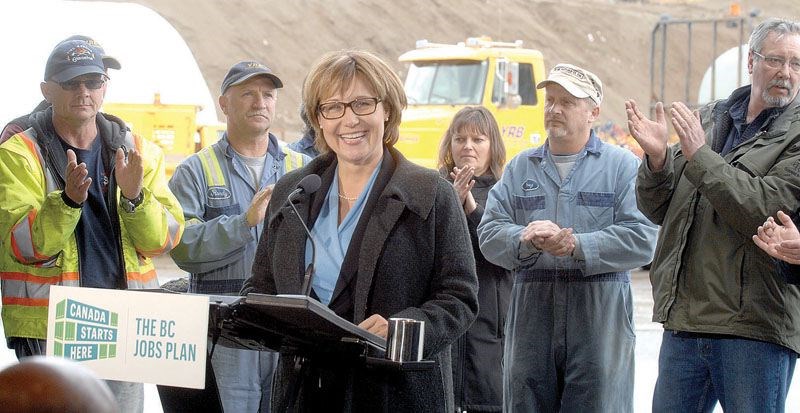The provincial government's new blueprint for transportation improvements includes a commitment to complete the second phase of the Cariboo Connector within the next decade.
Entitled B.C. on the Move, the 10-year plan highlights $2.5 billion in proposed spending in highways, rest stops, public transit, airports and cycling corridors.
"The best possible transportation network is vital to the daily lives of every single British Columbian and is one of the most-important foundations of a strong economy," said Minister of Transportation and Infrastructure Todd Stone, in a press release. "B.C. on the Move is the roadmap for the next 10 years on how we will expand and improve our transportation network to ultimately improve the quality of life for us all."
On the list is the remaining four Cariboo Connector projects announced in 2011 as the $200 million Phase 2 of four-laning initiative between Cache Creek and Prince George. Construction of the section between Stone Creek and Williams Road is supposed to begin this summer and planning for future projects is also supposed to begin in the scope of the 10-year forecast.
The plan also highlights an investment of $380 million over three years to resurface provincial highways, $189 million to repair and replace provincial bridges and $270 million to improve more than 500 kilometres of side roads.
Construction of additional passing lanes between Kamloops and Tete Jaune Cache on Highway 5 and on Highways 16 and 37 are also on deck.
Prior to drafting the B.C. on the Move document, the ministry held a two-month consultation period last fall. This included stakeholder meetings and a public survey. The survey drew more than 12,500 responses with the vast majority (95 per cent) citing keeping highways, bridges and side roads in good condition as the top priority, followed by 87 per cent who said expanding and increasing transit services was important.
Meetings were held in Prince George with local government officials on Oct. 29, 2014 and representatives from community and business groups on Nov. 25, 2014 and with the Prince George Airport Authority on Nov. 28, 2014.
In a meeting summary released as part of the report, those participating in the local government meeting asked that the ministry consider traffic impacts from trucks and vehicles accessing mines in the north as well as highway passing lanes, shoulder enhancements and pullouts be looked at to improve safety. The meeting participants also noted a need to enhance highways to accommodate an increased traffic volume between Dawson Creek and Fort St. John and on Highway 16 West.
During the Nov. 25 stakeholder meeting, participants highlighted height issues with rail overpasses in the Peace region, suggesting the province look at lowering the grade of the road.
The province also plans a provincial trucking strategy to upgrade and replace bridges and overpasses and to work with industry to expand the number of corridors that are pre-approved for 85- to 125-tonne loads. The plan also highlights the intention to start design work for the replacement of the Salmon River and Parsnip bridges on Highway 97.
The airport authority emphasized that the funding model for airports wasn't working properly for smaller airports, which need additional funding or the ability to access capital funding programs.
A $24 million pot is being put aside as the B.C. Air Access Program, earmarked for airport infrastructure improvements.



